As concerns about the environment increase, more and more consumers are willing to pay a premium for “environmentally friendly” products and services. As a result, it has become advantageous for brand owners to identify their goods and services as environmentally preferred. But doing so has become more complicated for two reasons.
Firstly, consumers have become more aware of such labelling and are looking for recognised environmental labels that they can trust and rely upon.
Secondly, governments have taken an interest in protecting consumers from the “greenwashing” of products and services by companies. The result has been the creation of a number of recognised environmental labels, the use of which is regulated by governmental or quasi-governmental agencies.
There is a variety of schemes. Some of them are used worldwide, some have rather local extent. Also various legal models apply, from environment oriented varieties of universal certification schemes (ISO 14000 family) through legislative acts in various jurisdictions to private and self-regulation schemes applying the legal models of registered trade marks or certification trade marks.
The Brands and Marketing Team set out to identify and gather information about a few of the more desirable environmental performance labels in various jurisdictions and we set out below some information about the bodies that administer them, the products or services on which they appear and the requirements for their use. Specifically, we discuss: (1) EU Ecolabel, (2) Green Point, (3) USDA Organic, (4) PEFC, and (5) FSC/FOREST STEWARDSHIP COUNCIL.
1. EU Ecolabel
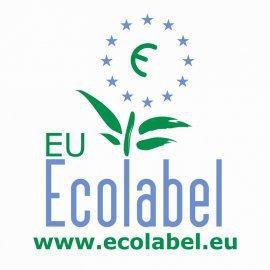
Legal basis
This mark has been created and supported by the European Union “in order to avoid the proliferation of environmental labelling schemes and to encourage higher environmental performance in all sectors for which environmental impact is a factor in consumer choice”.
It is not a trade mark but a separate distinctive sign granted on a voluntary basis and protected by a legislative scheme first enacted in 1992. Current Regulation (EC) No 66/2010 of the European Parliament and of the Council of 25 November 2009 on the EU Ecolabel is the third in a row.
Products, services and requirements
Ecolabel criteria are based on the environmental performance of products. They are determined on a scientific basis considering the whole life cycle of products. Specific criteria are adopted by the European Commission separately for each product group.
Each Member State of the EU designates one or more bodies within government ministries or outside responsible for carrying out the tasks related to auditing the relevant processes and granting right to use Ecolabel. This includes testing and assessment of the product and on-site verification.
The operator who wants the product to be marked with Ecolabel shall obtain certification in a competent body in the Member State where the product originates or – when the product originates in many Member States or outside the EU – in a Member state of its choice. The operator is charged a fee for the costs of the procedure
Any false or misleading advertising or use of any label or logo which leads to confusion with the EU Ecolabel shall be prohibited. Member States shall also lay down the rules on penalties applicable to infringements of the provisions of the Ecolabel Regulation and shall take all measures necessary to ensure that they are implemented. The penalties provided for must be effective, proportionate and dissuasive and detailed procedure is left to national provisions (such as unfair competition laws).
Other facts
By the end of 2011, more than 1,300 licences had been awarded, and today, the EU Ecolabel can be found on more than 17,000 products (source: European Commission). The EU Ecolabel covers a huge range of products and services, all non-food and non-medical (see chart).
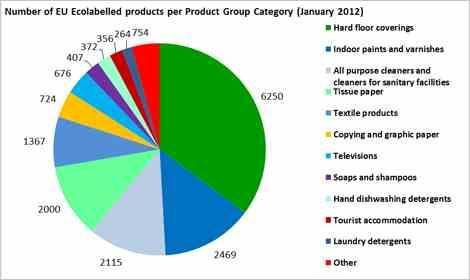
Source: http://ec.europa.eu/environment/ecolabel/facts-and-figures.html
Further reading:
http://ec.europa.eu/environment/ecolabel/eu-ecolabel-for-businesses.html
2. Green Point (or Der Grüne Punkt)
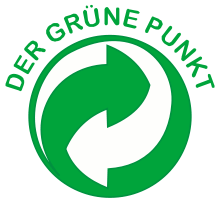
Legal basis
The system is based on granting a licence to use a registered trade mark. It was introduced by Duales System Deutschland (DSD) in 1990.
Products, services and requirements
The sign is applied to product packaging.
DSD offers complex services related to collection of waste packaging in Germany. At the same time, the company has a network of partners providing the same type of services in other countries. A peculiar feature of the licensing system is that DSD licenses its certification trade mark to third parties based on use by the interested third party of services of DSD (or its partners in other countries) and/or on the general compliance by the third parties with the rules on collection of waste packaging.
Other facts
The above way of combining the two functions of the sign in the licensing scheme of DSD lead to charges of abuse of dominant position and to issuance by the European Comission, of 2001/463/EC: Commission Decision of 20 April 2001 relating to a proceeding pursuant to Article 82 of the EC Treaty (Case COMP D3/34493 — DSD). In that decision, the Commission specifically obligated DSD “not to charge any licence fee for such partial quantities of sales packaging carrying the Green Dot trade mark as are put into circulation in Germany for which the exemption service referred to in Article 2 of the Trade Mark Agreement is not used and for which the Packaging Ordinance obligations have demonstrably been fulfilled in another way
Further reading:
http://www.gruener-punkt.de/?L=1
3. USDA Organic
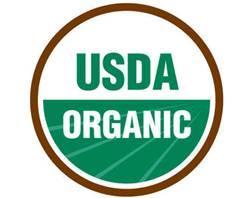
Legal basis
The United States Department of Agriculture’s (USDA) National Organic Program permits a farm or processing establishment to identify its products to the public as “organic”.
Products, services and requirements
Agricultural goods that have been produced through USDA-approved methods and agricultural processes are permitted to bear the USDA ORGANIC seal.
The USDA accredits third-party certifying agents, who are located both in the US and around the world, and who ensure that certified organic operations meet or exceed the requirements of the Program.
The National Organic Program’s requirements prohibit the use of synthetic fertilizers, sewage sludge, irradiation, and genetic engineering. The product must be produced in accordance with the USDA’s National List of Allowed and Prohibited Substances, and an authorised certifying agent must oversee the production process.
Violators of the USDA organic regulations are subject to enforcement actions, which can include monetary fines, as well as suspension or revocation of organic certificates.
Other facts
Even if component ingredients of a product are certified organic, the final product itself must be separately certified before it can be labelled organic anywhere on the product’s packaging or on its principal display panel. Otherwise, individual ingredients may be identified as certified organic on the product’s information panel, together with the percentage of organic ingredients.
Further reading:
http://www.ams.usda.gov
http://www.usda.gov/wps/portal
http://www.ams.usda.gov (Labeling Organic Products)
4. PEFC label

Legal basis
The Programme for the Endorsement of Forest Certification (PEFC) endorses national certification systems, and such systems subsequently certify local forest owners and managers who adhere to PEFC’s benchmark practices for responsible forest management.
Additionally, entities selling sustainable forest-based products may obtain a PEFC logo usage licence, which permits them to utilize the PEFC logo and label on their products or in connection with product marketing. The United States is a PEFC-endorsed national member.
Products, services and requirements
The PEFC logo and label can be placed both on- and off-product. When placed on-product, the label states: (1) “PEFC Certified: This product is from sustainably managed forests and controlled sources” or (2) “PEFC Certified and Recycled: This product is from sustainably managed forests, recycled and controlled sources”.
When placed off-product (for educational or promotional purposes), the label states: “Promoting sustainable forest management”.
PEFC-certified forest operations and managers must meet PEFC’s Sustainable Forest Management “best practice” requirements. These requirements include conducting operations in accordance with applicable legal frameworks, supporting the benefits that forests provide to ecosystems, from provision of raw materials and habitats to regulation of the water cycle, substituting natural alternatives in place of chemicals (or minimizing the use of chemicals), maintaining or enhancing forest biodiversity, supporting local employment, and protecting the rights of workers and indigenous peoples.
Other facts
PEFC United States has two certification programmes, namely, the Sustainable Forestry Initiative Inc (SFI) and the American Tree Farm System (ATFS).
Further reading
http://www.pefc.org/.../AFF_Standard.pdf (National Forest Certification)
http://www.pefc.org/.../Evaluation_Report.pdf (ATFS Evaluation)
http://www.pefc.org/.../Evaluation_Report.pdf (SFI Evaluation)
http://www.pefc.org/certification-services/forest
http://www.pefc.org/.../8-United States
5. Forest Stewardship Council (FSC)
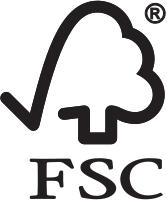
FOREST STEWARDSHIP COUNCIL (word)
Legal basis
The Forest Stewardship Council is an international not-for-profit organisation, the aim of which is to promote responsible forestry. The FSC, or its accredited partners, certify forests that are planted and managed in accordance with the FSC’s high environmental and social standards and grant licences to use their registered trade marks to companies which fulfil their requirements.
Products, services and requirements
The FSC trade marks appear on thousands of everyday wood-based products, such as paper, cardboard packaging, furniture, sheds, tools, toilet tissue and pencils as well as some slightly less everyday items such as coffins.
Products can bear the FSC trade marks if they are made from (or with the requisite proportion of) wood from certified forests and if they have travelled down a certified chain of custody that tracks the timber through every stage in the supply chain to the end consumer. The FSC trade marks must be used in conjunction with an indication as to whether 100% of the product is from certified forests or whether only a proportion of it is.
The FSC also allows its trade marks to be used on wood-based products that have been verified by the relevant certification body as being made from 100% recycled materials (85% of which must be from post-consumer recycled material). This recognises the important role that recycling plays in protecting forests.
For companies wishing to use FSC trade marks on the packaging for their (non-wood-based) products, they either need to buy this packaging from FSC certified sources or they need to have their own internal supply chain certified. This is a complex and costly process, but many companies regard this as worthwhile for operational efficiency and because the FSC trade marks make consumers aware of the premium and responsible attitude of the brand.
The FSC monitors for misuse of its FSC trade marks and will bring proceedings for infringement where necessary.
Other facts
The FSC is one of the two best known organisations for promoting responsible forestry. The other is the Programme for Endorsement of Forest Certification Schemes (PEFC).
Further reading:
https://ic.fsc.org/index.htm
http://www.pefc.org/
Feedback welcome
Our hope is that the above information will be of use to the MARQUES membership, both to businesses who are considering how to make commercial capital from their green credentials (or whose competitors are making illegitimate green claims) and to members who may need to advise clients in this area.
We welcome your feedback and are happy to consider extending this article to cover any other environmental signs which are of particular interest to MARQUES members.
Finally, while we hope this text may be an inspiration and introduction to further reading, we kindly ask you to note that we cannot take legal responsibility for its accuracy and advise that everybody makes decisions based on appropriate legal advice.
By Cara Boyle of Fross Zelnick lehrman & Zissu, Roger Evans of BAT, Michal Siciarek of LDS and Kathryn Szymczyk of SC&C|Taking IP Practices Further. The authors are all members of the Green Labelling Subteam of the Brands and Marketing Team
 Issue 043
Issue 043
 Issue 043
Issue 043